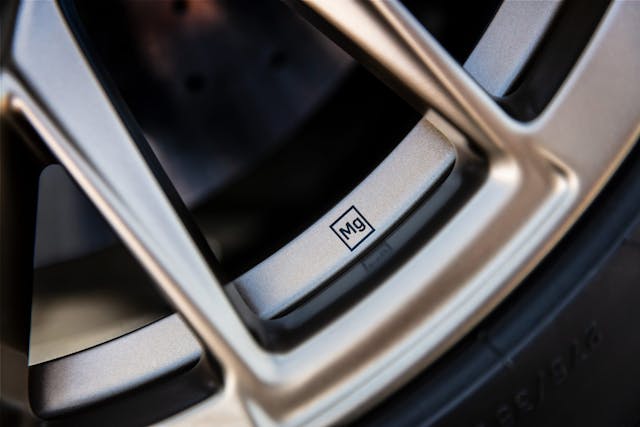Media | Articles
Cadillac CT4-V and CT5-V Blackwing to offer optional magnesium wheels
Cadillac is peeling back the layers of the upcoming 2022 CT4-V Blackwing and CT5-V Blackwing, this time revealing yet another performance aspect of these two high-performance sport sedans. Customers will be able to spec magnesium-alloy wheels for these Blackwing models, along with the carbon-fiber seats announced earlier this fall.
Magnesium-alloy wheels are lighter than their more common aluminum-alloy counterparts, helping reduce unsprung weight at each corner of the car. This, in turn, helps sharpen the handling of the car and improves ride quality. Magnesium wheels are also particularly effective at absorbing the energy of road vibrations and transforming it into heat, which is then dissipated by air passing over the wheels as the car moves. Between these high-tech wheels and the recently-revealed fourth-generation Magnetic Ride Control, we expect the compact and mid-sized Blackwing beasts to be some of the best-handling four-doors out there.
Motorsports outfits have been hip to the magnesium hype train for some time now—Formula 1, Moto GP, and World Endurance Championship teams (like the ones that run the Cadillac DPi-V.R cars) use magnesium-alloy wheels to help optimize the performance of their entries in competition.

Magnesium has a high oxidization rate. As the metal contacts air it oxidizes and begins turning to powder which, by the way, happens to be extremely flammable. Cadillac is well aware of this potential issue, which is why it uses an alloy (a combination of metals) to mitigate this natural process. On the Blackwing wheels Cadillac also uses a five-layer coating process (the brand’s forged aluminum wheels use a three-layer process) to further boost defense against oxidation. One of the coats employs a method known as micro arc oxidation, which creates a dense and pliable nano-ceramic oxide layer on the wheel. Micro arc oxidation reduces wear on the wheels and allows for longer shelf-life.
Why magnesium instead of carbon-fiber wheels similar to what Ford uses on the GT500? Cadillac spokesperson Stefan Cross explained that, in development testing, the magnesium-alloy wheels did a better job absorbing road vibration and dissipating heat, but the superior damping performance was the main deciding factor. Additionally, while both carbon-fiber and magnesium-alloy wheels reduce overall mass compared to aluminum, the brunt of the mass savings in the magnesium-alloy wheel is near the center; weight savings are equally distributed across the carbon-fiber wheels. Cross explained that the more centralized weight savings on the former allowed for better flexibility in wheel design.
Marketplace
Buy and sell classics with confidence
The ATS-V and CTS-V were genuinely compelling enthusiast products that represented America’s best answer to European sport sedans from Audi, Mercedes, and BMW. We’re pleased to see Cadillac remaining loyal to a waning segment with more than just lip service, and the high-tech advancements bound for the Blackwing cars (save for the defunct Blackwing DOHC V-8) demonstrate that Cadillac is serious about improving on the legacy of performance its V brand built from the ground up. We’ve seen the CT4-V Blackwing out and about a few times, always dressed partial camouflage, but the wait to see the real thing will be over soon.



